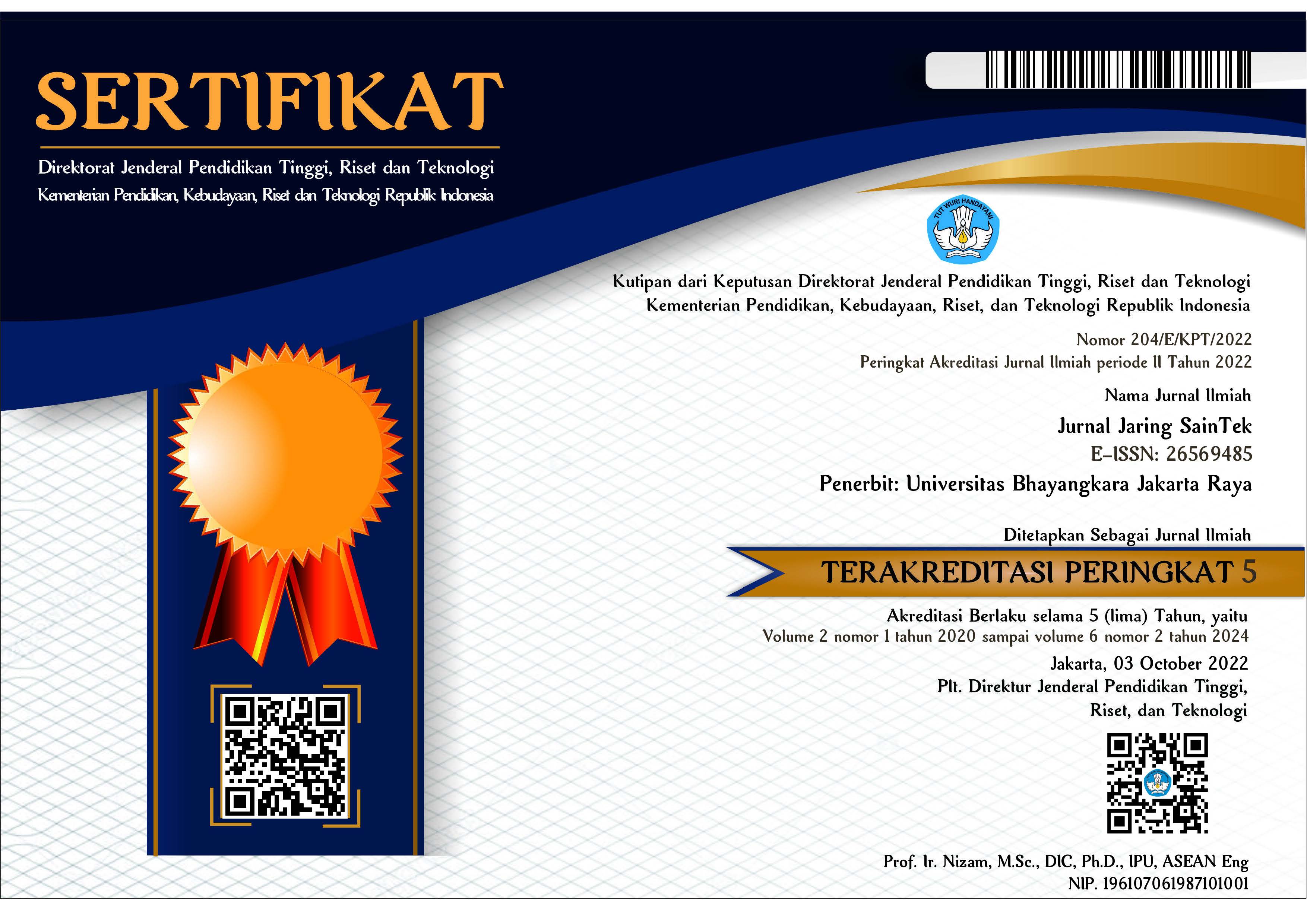BIOREMEDIASI SEBAGAI ALTERNATIF PENGEMBALIAN FUNGSI TANAH YANG TERCEMAR MINYAK BUMI
DOI:
https://doi.org/10.31599/qgf9re58Keywords:
bioremediation, TPH, effectiveness of microorganismAbstract
Oil contamination from field drilling waste is a
serious environmental problem worldwide.
These oil contaminants must be removed to
maintain biodiversity and ecological balance.
Bioremediation is a soil cleaning technique that
utilizes the metabolic ability of microorganisms
to degrade soil contaminants. The use of native
bacteria producing biosurfactants and
utilization of hydrocarbons increases the
effectiveness of bioremediation by making
hydrocarbons bioavailable for degradation.
Determination
of
bioremediation
microorganisms affects the degradation
process of petroleum. This is because each
microorganism requires a specific substrate to
reduce all the components of petroleum in the
soil. A deeper approach is needed to obtain the
effectiveness of microorganisms, both
nonindigenous and indigenous microorganisms
that are applied by researchers in degrading
petroleum. However, not all available journal
summaries provide a detailed explanation of
the method and effectiveness
of
microorganisms in the bioremediation method.
In this review, we will provide several
microorganisms and methods used in
bioremediation,
including
adsorptive
bioremediation, biopile, in-situ bioremediation,
landfarming, biostimulation, and composting in
order to find the most effective method in the
petroleum bioremediation process.
Downloads
References
Asep, H. G. (2017). Telaah Mendalam tentang
Bioremediasi : Teori dan Aplikasinya
dalam Upaya Konservasi Tanah dan
Air. 2017.
Beškoski, V. P. et al. (2011). Ex situ
bioremediation of a soil contaminated
by mazut (heavy residual fuel oil) - A
field experiment Chemosphere, vol. 83,
no.
,
pp.
–
,doi:10.1016/j.chemosphere.2011.01.
Brown, D. M. et al. (2017). Comparison of
landfarming amendments to improve
bioremediation
of
petroleum
hydrocarbons in Niger Delta soils. Sci.
Total Environ., vol. 596–597, pp. 284–
,
,
doi:
1016/j.scitotenv.2017.04.072.
Chaprão, M. J. et al. (2018). Formulation and
application of a biosurfactant from
Bacillus methylotrophicus as collector
in the flotation of oily water in industrial
environment J. Biotechnol., vol. 285,
pp.
–22,
doi:
1016/j.jbiotec.2018.08.016.
Chikere, C.D., Tekere, M., & Adeleke, R.
(2019).
Enhanced microbial
hydrocarbon
biodegradation
as
stimulated
during
field-scale
landfarming of crude oil-impacted soil.
Sustain. Chem. Pharm., vol. 14, no.
May, p. 100177, 2019, doi:
1016/j.scp.2019.100177.
Concetta, M., & Daugulis, A. J. (2013). Ex situ
bioremediation of contaminated soils:
An overview of conventional and
innovative technologies. Crit. Rev.
Environ. Sci. Technol., vol. 43, no. 20,
pp.
–2139
doi:
1080/10643389.2012.672056.
Crooks, R. & Prentice, P. (2017). Extensive
Investigation Into Field Based
Responses to a Silica Fertiliser. Silicon,
vol. 9, no. 2, pp. 301–304 doi:
1007/s12633-015-9379-3.
Das, A. J. & Kumar, R. (2019). Production of
biosurfactant from agro-industrial waste
by Bacillus safensis J2 and exploring its
oil recovery efficiency and role in
restoration of diesel contaminated soil.
Environ. Technol. Innov., vol. 16, p.
, doi: 10.1016/j.eti.2019.100450.
Diplock, E. E., Mardlin, D. K., Killham, K. S.,
& Paton, G. I. (2010). The role of
decision support for bioremediation
strategies, exemplified by hydrocarbons
for in site and ex situ procedures.
Methods Mol. Biol., vol. 599, no. 1, pp.
–215. doi: 10.1007/978-1-60761439-5_13.
Edwin,
T. & Mera, M. (2019). Bioremediasi
dengan Metode Komposting untuk
Biodegradasi Pestisida Pada Tanah. pp.
–1017
[Online]. Available:
https://conference.ft.unand.ac.id/index.
php/ace/Ace2019/paper/viewPDFInters
titial/1134/371.
F. Coulon et al. (2012). Effect of fertilizer
formulation and bioaugmentation on
biodegradation and leaching of crude
oils and refined products in soils.
Environ. Technol. (United Kingdom),
vol. 33, no. 16, pp. 1879–
,doi:10.1080/09593330.2011.6502
Gomez, F. & Sartaj, M. (2013). Field scale exsitu
bioremediation of petroleum
contaminated soil under cold climate
conditions. Int. Biodeterior. Biodegrad.,
vol. 85, pp. 375–382, 2013, doi:
1016/j.ibiod.2013.08.003
Grace, P. W., et al. (2011). Bioremediation of
petroleum hydrocarbon contaminated
soil: Effects of strategies and microbial
community shift. Int. Biodeterior.
Biodegrad., vol. 65, no. 8, pp. 1119–
,
,
doi:
1016/j.ibiod.2011.09.002.
Kumari, B., Singh, S. N., & and Singh, D. P.
(2012). Characterization of
two
biosurfactant producing strains in crude
oil degradation. Process Biochem., vol.
, no. 12, pp. 2463–2471,
doi:10.1016/j.procbio.2012.10.010.
Krishnan, J. et al. (2017). Effect of pH,
inoculum dose and initial dye
concentration on the removal of azo dye
mixture under aerobic conditions Int.
Biodeterior. Biodegrad., vol. 119, pp.
–27.
doi:
1016/j.ibiod.2016.11.024.
Ma, S. C., Wang, J. L., Zhang, D. H., & Liu
X.G. (2015). Detection analysis of
surface hydroxyl active sites and
simulation calculation of the surface
dissociation constants of aqueous
diatomite suspensions. Appl. Surf. Sci.,
vol. 327, pp. 453–461, 2015, doi:
1016/j.apsusc.2014.12.006.
Marsandi, F., & Estuningsih, S. P. (2016)
Asosiasi
konsorsium
bakteri
Pseudomonas pseudoalcaligenes dan
Micrococus luteus dengan lamtoro
(Leucaena leucocephala (Lamk.) De
Wit) dalam upaya meningkatkan
bioremediasi minyak bumi. Proceeding
Biol. Educ. Conf. Biol. Sci.
Enviromental, Learn., vol. 13, no. 1, pp.
–813, 2016.
Machado, T. S. et al. (2020). Effects of
homemade biosurfactant from Bacillus
methylotrophicus on bioremediation
efficiency of a clay soil contaminated
with diesel oil. Ecotoxicol. Environ.
Saf., vol. 201, no. May, p. 110798, 2020,
doi: 10.1016/j.ecoenv.2020.110798
Priadie, B. (2012). Teknik Bioremediasi
Sebagai Alternatif Dalam Upaya
Pengendalian Pencemaran Air. J. Ilmu
Lingkung., vol. 10, no. 1, p. 38, 2012,
doi: 10.14710/jil.10.1.38-48.
Rodrigues, E. M., Kalks, K. H. M., & Tótola,
M.R. (2015). Prospect, isolation, and
characterization of microorganisms for
potential use in cases of oil
bioremediation along the coast of
Trindade Island, Brazil. J. Environ.
Manage., vol. 156, pp. 15–22,
doi:10.1016/j.jenvman.2015.03.016.
Sabaté, D. C., & Audisio, M. C. (2013).
Inhibitory activity of surfactin,
produced by different Bacillus subtilis
subsp. subtilis strains, against Listeria
monocytogenes
sensitive
and
bacteriocin-resistant strains. Microbiol.
Res., vol. 168, no. 3, pp. 125–129. doi:
1016/j.micres.2012.11.004
Saum, L., Jiménez, M. D. & Crowley, D.
(2018). Influence of biochar and
compost on phytoremediation of oilcontaminated
soil.
Int.
J.
Phytoremediation, vol. 20, no. 1, pp.
–60.









